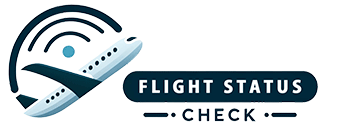The Evolution of Flight Status: From F9 1522 to the Modern Day
Have you ever been eagerly awaiting the arrival of a loved one at the airport, only to be left in the dark about the status of their flight? Or perhaps you’ve experienced the frustration of being stuck in an airport due to a delayed or cancelled flight, with little information about when you might be able to reach your destination. Luckily, the days of uncertainty surrounding the status of flights are long gone, thanks to the evolution of technology and real-time flight tracking systems.
Let’s take a journey back in time to when flight status information was not as readily available as it is today. In the early days of commercial air travel, passengers would have to rely on word-of-mouth updates from airline staff, or perhaps a printed departure and arrival board at the airport. This meant that passengers often had to wait in uncertainty, not knowing whether their flight was on time, delayed, or cancelled.
Fast forward to the present day, and we find ourselves in a world where real-time flight tracking is at our fingertips. Passengers can now easily access the status of their flight through airline websites, mobile apps, and third-party flight tracking services. These tools provide up-to-date information on departure and arrival times, gate changes, and even the location of the aircraft in real-time.
One such flight that has experienced its fair share of status updates is F9 1522. Frontier Airlines Flight 1522 is a domestic flight within the United States, known for its frequent service between popular destinations. As with any flight, F9 1522 has encountered its fair share of delays, cancellations, and on-time departures. Passengers and aviation enthusiasts alike can now track the status of F9 1522 using the airline’s official website or through flight tracking apps.
The evolution of flight status tracking has been driven by advancements in technology and the demand for real-time information. Today, airlines rely on sophisticated systems to monitor and communicate the status of their flights to passengers, crew, and ground staff. These systems use a combination of radar, GPS, and communication networks to provide accurate and reliable updates on the location and status of an aircraft.
In addition to providing convenience for passengers, real-time flight tracking has also improved safety and efficiency in the aviation industry. Pilots and air traffic controllers can use this information to better manage air traffic and make informed decisions about flight routes and weather conditions. In the event of an emergency, real-time tracking can also assist authorities in locating a missing or distressed aircraft.
As we look to the future of flight status tracking, we can expect to see even more advanced technologies and features that will further enhance the passenger experience. For example, some airlines are exploring the use of augmented reality and virtual reality to provide passengers with immersive updates on their flight status. Others are working on predictive analytics, which can anticipate and communicate potential delays or disruptions before they occur.
In conclusion, the evolution of flight status tracking, from F9 1522 to the modern day, has revolutionized the way we travel by air. Passengers now have access to reliable and up-to-date information about their flights, allowing them to plan and adapt to any changes in their travel schedules. As technology continues to advance, we can expect flight tracking to become even more seamless and integrated into the overall passenger experience. Whether you’re a frequent flyer or an occasional traveler, the days of uncertainty about the status of your flight are behind us, thanks to the power of real-time flight tracking.

Leave a Reply